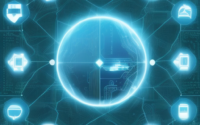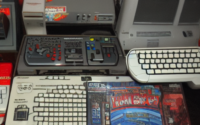PC Maintenance and Troubleshooting Tips
PC Maintenance and Troubleshooting Tips
Introduction
In this guide, we will explore some essential PC maintenance and troubleshooting tips to help you keep your computer running smoothly. From regular maintenance tasks to troubleshooting common issues, these tips will ensure that your PC remains in optimal condition.
1. Regular Software Updates
Keeping your operating system and software up to date is crucial for maintaining a secure and efficient PC. Enable automatic updates to ensure that you receive the latest patches and bug fixes from the developers. Regular updates will not only enhance security but also improve performance and compatibility with newer software.
2. Disk Cleanup and Defragmentation
Over time, your hard drive accumulates unnecessary files and fragments data, leading to slower performance. Use the built-in Disk Cleanup tool on Windows or third-party software on other platforms to remove temporary files, system caches, and other junk files. Additionally, run a disk defragmentation tool to optimize file storage on your hard drive and improve access times.
3. Malware Protection
Protecting your PC from malware is essential to ensure its security and performance. Install a reputable antivirus or anti-malware software and regularly update its virus definitions. Perform regular full system scans to detect and remove any potential threats. Avoid clicking on suspicious links or downloading files from untrustworthy sources to minimize the risk of malware infections.
4. Hardware Maintenance
To keep your PC running smoothly, it’s important to maintain its hardware components. Regularly clean the dust from your computer’s vents, fans, and heat sinks to prevent overheating. Ensure proper cable management to improve airflow inside the case. Check for loose connections, and if necessary, tighten them. Keep an eye on the health of your hard drive using diagnostic tools and replace it if any issues arise.
5. Managing Startup Programs
Many programs automatically start up when you turn on your PC, causing it to take longer to boot. Use the Task Manager on Windows or similar tools on other platforms to manage startup programs. Disable unnecessary programs from starting up, leaving only essential ones. This will significantly improve your PC’s startup time and overall performance.
6. Resolving Software Issues
If you encounter software-related issues such as freezing, crashing, or strange errors, there are a few troubleshooting steps you can follow. First, try restarting your PC to clear any temporary glitches. If the issue persists, check for updates for the problematic software and install them. Additionally, repairing or reinstalling the software may resolve the issue. If all else fails, consider reaching out to customer support for further guidance.
7. Troubleshooting Internet Connectivity
When experiencing internet connectivity problems, there are a few steps to troubleshoot the issue. Start by checking if other devices on the same network are experiencing the same problem. If they are, then the issue might be with your internet service provider. Restarting your router or modem can often resolve connectivity issues. It’s also helpful to update your network drivers and check for any firewall or antivirus settings that might be blocking internet access.
8. Backing Up Important Data
Regularly backing up your important data is crucial to protect against data loss in case of hardware failure or other unforeseen events. Utilize external hard drives, cloud storage, or backup software to create backups. Automate the backup process to ensure your files are always up to date. Additionally, test your backups periodically to verify their integrity.
Conclusion
By following these PC maintenance and troubleshooting tips, you can extend the lifespan of your computer, enhance its performance, and minimize the risk of unexpected issues. Regularly performing these tasks will help you avoid common pitfalls and ensure that your PC remains in excellent condition.


